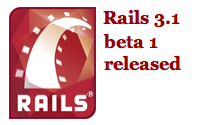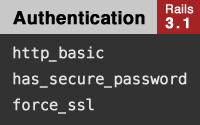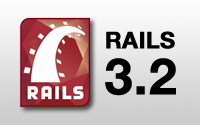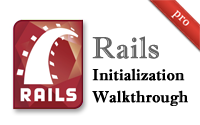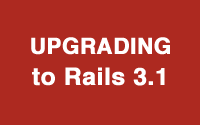Categories
- Active Record
- Active Resource
- Active Support
- Administration
- Ajax
- APIs
- Authentication
- Authorization
- Background Jobs
- Caching
- Code Walkthrough
- Controllers
- Debugging
- Deployment
- eCommerce
- Forms
- Mailing
- Models
- Performance
- Plugins
- Production
- Rack
- Rails 2.0
- Rails 2.1
- Rails 2.2
- Rails 2.3
- Rails 3.0
- Rails 3.1
- Rails 3.2
- Rails 4.0
- Refactoring
- Routing
- Search
- Security
- Testing
- Tools
- Views
Applied Filters:
rails x
MiniTest with Rails
MiniTest is a fast and lightweight testing library. Here you will learn how to use it in a Rails app for model, helper, and integration testing. The Turn gem is also demonstrated for prettier test output.
(15 minutes)
Model Caching (revised)
Caching at a low level is a great option when the view is too dynamic to cache and you need something flexible that can work anywhere in the application. Here I show a variety of ways to use Rails.cache with Active Record.
(12 minutes)
Rails 3.1 Overview
This is the first episode in a series covering Rails 3.1. Here I show how to install the beta and show some of the new features.
(13 minutes)
Fast Tests
A slow test suite can put a damper on test-driven development. In this episode I show a variety of ways to optimize specs including: selective testing, preloading Rails, and testing outside of Rails.
(17 minutes)
Authentication in Rails 3.1
Here I show off three new features in Rails 3.1 that will help with authentication: easier HTTP Basic, SecurePassword in the database, and forcing SSL.
(7 minutes)
Upgrading to Rails 3.2
Rails 3.2 sports many new features including automatic explain queries, tagged logging, key-value store in Active Record, improved migration generator and more. Learn all about these new features in this episode.
(9 minutes)
AngularJS
AngularJS is an awesome framework for easily creating rich, client-side applications. Its powerful bindings allow you to do a lot with very little code. Here I show how to integrate Angular with a Rails app.
(16 minutes)
Rails Initialization Walkthrough
In this episode I walk you through the internals of the Rails initialization process and show exactly what happens behind the scenes when starting up the Rails application.
(13 minutes)
Handling Exceptions (revised)
By default, Rails will render a static error file when an exception occurs in production. Here you will learn how to fully customize this behavior and render dynamic error pages.
(11 minutes)
Upgrading to Rails 3.1
It is incredibly easy to upgrade to Rails 3.1, but if you want to take advantage of the asset pipeline you will need to put in some extra effort. Have no fear because I walk you through each of the necessary steps in this episode.
(8 minutes)



